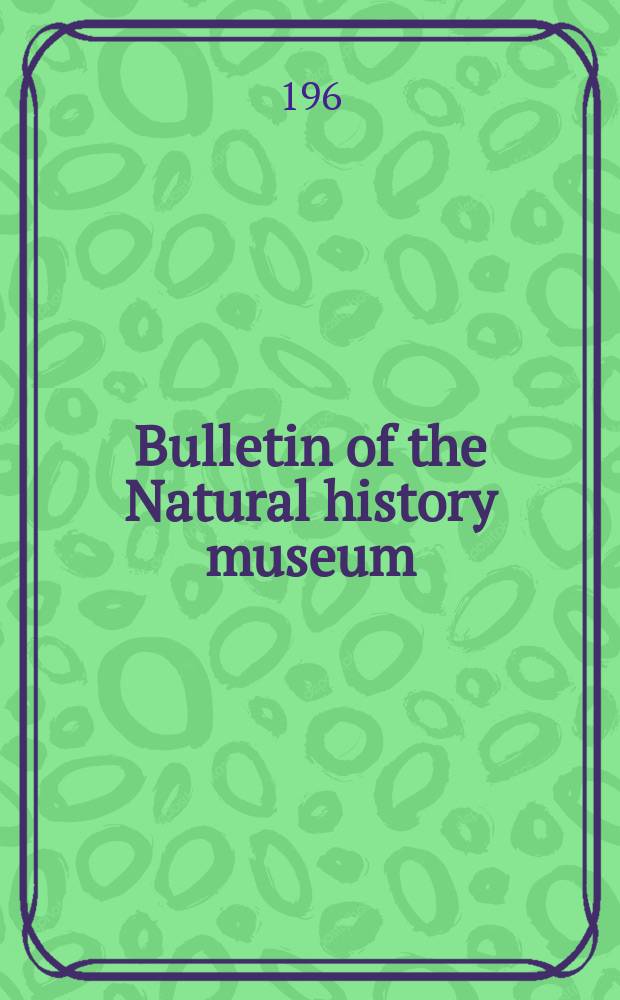Science Bulletins: The Rise of Fire
Wildfires, whether ignited by lightning or people, show global patterns that are visible to satellites. In the United States, fire is increasing: on average, millions ...
American Museum of Natural History
Science Bulletins: Hubble Space Telescope—25 Years and Counting
Few of NASA's telescopes have captured the public imagination like Hubble, with its spectacular views of distant galaxies, supernovas, and nebulas. The first ...
American Museum of Natural History
Science Bulletins: Thinking in Symbols
Modern human culture underwent a "creative explosion" in Ice Age Europe 40000 to 10000 years ago. The evidence, which ranges from fantastic cave paintings ...
American Museum of Natural History
Setting the stage for the blue whale skeleton move | Natural History Museum
Watch the scaffolding rising around our blue whale skeleton as the Museum gears up for a move of gigantic proportions. From the summer of 2017, the skeleton ...
Natural History Museum
Science Bulletins: On Shaky Ground—Building a Safer Future in Haiti
In November 2010, ten months after a magnitude 7.0 earthquake flattened huge sections of Port-au-Prince, Haiti, a team of geologists commissioned by the ...
American Museum of Natural History
Science Bulletins: SALT—Imaging the Southern Sky
When South Africa decided to build a new telescope, it went big. As in rival-the-world's-best big. With the participation of astronomy groups from all over the ...
American Museum of Natural History
Science Bulletins: Our Ancient Relatives Born with Flexible Skulls
A new study of the skull of an early hominin child provides a better understanding of the evolutionary timeline for modern human skulls-and brains. The skulls of ...
American Museum of Natural History
Science Bulletins: Exploring a Star’s Death in 3D
Cassiopeia A is the gas cloud left behind after a star exploded, first glimpsed on Earth about 325 years ago. Its youth and proximity to us make it one of the ...
American Museum of Natural History
Science Bulletins: Curiosity Rover Heads for Mars
The biggest and most technically advanced rover to date is on its way to Mars. In the latest Astro Bulletin from the Museum's Science Bulletins program, follow ...
American Museum of Natural History
Science Bulletins: Impact! Tracking Near-Earth Asteroids
Collisions between space objects are a vital part of the evolution of our Solar System. Most of Earth's impact craters have been wiped away due to plate tectonics ...
American Museum of Natural History
Science Bulletins: Habitat Corridors Benefit Isolated Plants
In many open habitats, more than one-third of seeds are wind-dispersed. For isolated patches of plants, the interaction of wind with the landscape can determine ...
American Museum of Natural History
Science Bulletins: Wild at Heart—The Plight of Elephants in Thailand
Elephants in Thailand have a big unemployment problem. Long a revered creature in traditional Asian cultures and a critical beast of burden for Asian ...
American Museum of Natural History
The Science of Speciation – Molecular Adaptation in Vampire Bats
Over 20% of all living mammal species are bats, and each is adapted to a particular diet: nectar, fruit, meat, insects—even blood! Follow scientists into the ...
American Museum of Natural History
Science Bulletins: Yellowstone—Monitoring the Fire Below
Three of the most catastrophic volcanic eruptions in geologic history occurred at a place now visited by nearly four million people a year: Yellowstone National ...
American Museum of Natural History
Science Bulletins: Cassini-Huygens Explores Saturn
After a seven-year trip, the Cassini spacecraft arrived at Saturn in July 2004. Since then, Cassini has been capturing never-before-seen imagery of the ringed ...
American Museum of Natural History
Science Bulletins: WISE Focus on Infinity
On September 30, 2010, a NASA space telescope called the Wide-field Infrared Survey Explorer, or WISE, completed its sweeping goal: to record observations ...
American Museum of Natural History
Science Bulletins: NAO—Driving Climate Across the Atlantic
For centuries, a massive atmospheric system has regularly altered weather patterns, fishery production and animal migrations across the North Atlantic Ocean.
American Museum of Natural History
Science Bulletins: Tapping In—The Promise of Brain-Computer Interface
For decades, neuroscientists have sought to use electronics to communicate with the brain. Computing and surgical technique have now become sophisticated ...
American Museum of Natural History
Science Bulletins: Rare Star Exposes a Black Hole's Appetite
A recent discovery near the Milky Way's center sheds light on the inner workings of our galaxy's supermassive black hole. Astronomers detected a rare type of ...
American Museum of Natural History
Science Bulletins: New Horizons Brings Pluto Into Focus
Tiny, faraway Pluto was first spied in 1930. This icy world is one of thousands of rocky bodies that make up the Kuiper Belt, a ring that circles our solar system ...
American Museum of Natural History




































